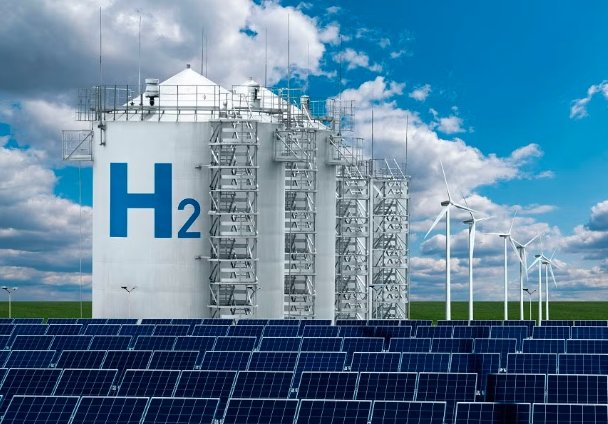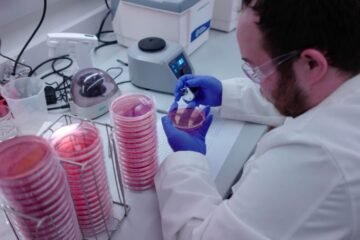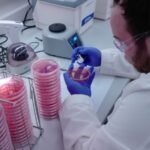Scotland is betting big on hydrogen. But it’s not just about clean fuel — it’s about future-proofing an entire economy. As net zero deadlines loom, the country is eyeing green hydrogen as both a climate solution and industrial revival.
Grangemouth in the Spotlight
The Scottish Parliament’s Net Zero, Energy and Transport Committee has been holding hearings in May 2025 focused on the industrial powerhouse of Grangemouth — a critical site for both current hydrogen production and future ambitions.
Grangemouth is already home to hydrogen manufacturing via steam methane reforming (SMR) — a carbon-intensive process classified as grey hydrogen. But policymakers and scientists are now pushing to turn the site into a testbed for cleaner hydrogen alternatives, particularly green and blue hydrogen.
SMR isn’t going away overnight, but the direction is clear: reduce emissions at source or replace the process entirely.

Colour Matters in Hydrogen
Not all hydrogen is created equal. In fact, it comes in shades — grey, blue, green, pink, even gold — each signalling a different production method and climate impact.
To keep things straight:
-
Grey Hydrogen: Made from natural gas via SMR. Polluting.
-
Blue Hydrogen: Same process, but with carbon capture and storage (CCS). Lower emissions, but not zero.
-
Green Hydrogen: Created by electrolysis using renewable energy. This is the cleanest — and most expensive — option.
-
Pink Hydrogen: Electrolysis powered by nuclear energy.
-
Gold/White Hydrogen: Extracted from naturally occurring reserves underground. Thought to be rare — but that’s changing.
One sentence alone:
Scotland’s preferred colour? Definitely green.
Green Hydrogen: Opportunity or Overpromise?
There’s a lot riding on green hydrogen — not just emissions targets, but jobs, energy independence, and industrial clout.
Electrolysis, the method behind green hydrogen, splits water into hydrogen and oxygen using electricity. In theory, plug in renewable power — Scotland’s got loads of it — and you get carbon-free fuel.
But the tech is expensive and not yet widely deployed.
Still, the momentum is real. Plans are already forming around wind-to-hydrogen hubs, with proposals in places like Aberdeen, Orkney, and Outer Hebrides. If all goes ahead, Scotland could become one of the top exporters of green hydrogen in Europe.
One industry source put it like this: “It’s not just about decarbonising Grangemouth — it’s about putting Scotland on the energy map again.”
Transportation: The Missing Piece
Making hydrogen is one thing. Moving it is another beast altogether.
Right now, most hydrogen in Scotland is used on-site — particularly in the chemicals and refining industries. Transporting it over long distances, especially to remote regions, is still a challenge.
Here’s how hydrogen could move across Scotland in the future:
-
Pipelines: Either retrofitted from natural gas networks or built new — both costly.
-
Road tankers: Useful for small-scale or early rollout, but not scalable for major industrial demand.
-
Ships: A long-term goal, especially for export to Europe.
-
Ammonia conversion: Some propose converting hydrogen to ammonia for easier shipping, then cracking it back on arrival.
Bullet points aside, one obstacle looms large: hydrogen is hard to store and even harder to move safely. Infrastructure lags far behind ambition.
Where Does Scotland Stand Today?
To understand how far Scotland has to go, it helps to look at the numbers. Here’s a snapshot of UK and European hydrogen production (2023):
| Country | Hydrogen Produced (Mt/year) | Main Source |
|---|---|---|
| UK | 0.62 | 90% from natural gas |
| Germany | 1.98 | Mixed, some green pilot |
| Netherlands | 1.48 | Fossil fuels + CCS |
| Poland | 1.18 | Mostly coal |
| China | 97.00 | Predominantly coal-based |
Scotland’s own hydrogen is currently a blip — SMR at Grangemouth and by-product hydrogen from ethylene production at Mossmorran.
It’s a start, but to scale up, Scotland needs serious investment — not just in hydrogen tech, but in storage, pipelines, ports, and regulation.
Geological Hydrogen: The Wild Card
A curveball in this whole story? Gold hydrogen, also called white hydrogen.
This naturally occurring underground hydrogen was once dismissed as fantasy. Now, discoveries in Mali, Australia, and the USA are turning heads — and funding.
Some researchers believe similar reserves could exist in Scotland, especially in its unique geologic formations.
The implications? If recoverable, white hydrogen could offer low-emission fuel without the infrastructure burden of electrolysis or CCS.
But that’s a big if. Right now, it’s mostly theory — not policy.
So What Happens Next?
Scotland’s Net Zero Energy and Transport Committee will continue its hydrogen inquiry this summer, looking at use cases, grid implications, and international opportunities.
Meanwhile, the government is under pressure to finalise a national hydrogen strategy that matches its climate targets with funding clarity.
The stakes are high: failure could leave Scotland stuck with stranded infrastructure and missed climate goals. Success could position the country as a global hydrogen hub by 2045.
For now, Grangemouth is both the problem and the proving ground.


















